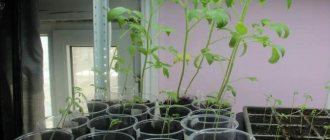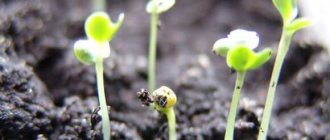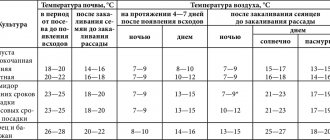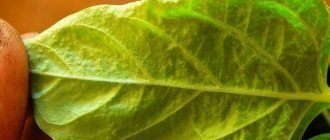Why do cucumber seedlings stretch?
Cucumbers are very demanding of external conditions. They react acutely to changes in the mineral composition of the soil, lighting conditions and temperature. High-quality seedlings - plants with thick stems, with large leaves of bright green color.
If the length of the internodes is 5-6 cm, then they speak of a disturbance in the development of the plant.
Lack of light
The minimum lighting regime for cucumber seedlings is 12-14 hours. In indoor conditions, this is very difficult to achieve, even if you place boxes with crops on southern windows. In this case, phytolamps with a power of at least 8000 lux are recommended.
Signs of lack of light:
- thinning of the stem part;
- discoloration of leaf plates;
- pulling the seedlings towards the light source.
Poor quality soil
Cucumber seedlings are grown in loose, breathable soil of moderate acidity. Acidification and alkalization are dangerous factors that can lead to the death of young plants.
Temperature violation
If the room temperature is more than +25°C, then the cucumber seedlings lose moisture, become thinner and begin to stretch upward. At the same time, the leaves become smaller. The situation is aggravated by low air humidity.
The worst place for boxes with seedlings is northern windows near heating sources.
Dense sowing
Dense seedlings are the cause of malnutrition of seedlings. Plants not only shade each other, but also begin to compete for water and minerals.
Normally, 1 seed should have 250 ml of free soil. At the stage of formation of the second pair of true leaves, the volume should already be 2 times larger. If these conditions are not met, the plant will weaken.
Irrigation violation
Cucumbers are considered a moisture-loving crop, but in indoor conditions they require strict adherence to the watering regime. Overwatering causes stagnation of moisture in the soil, which disrupts the development of the root system.
Planting elongated bushes
What to do if the seedlings are overgrown
If it was not possible to stop the too active growth of seedlings, stretching can be stopped by properly planting the sprouts in the garden bed.
The seedlings are carefully dug up and transplanted into open ground. The roots should not be buried deeply, otherwise blackleg disease may develop.
Then the stems need to be tied up; for this, a special crossbar is prepared in advance. There is no need to tighten them too much. Side shoots also need to be tied up so that the fruits hold well. Devices for maintaining cucumber stems can be constantly adjusted - remove excess ones and add missing ones.
Compliance with all these conditions will help you get a large harvest of cucumbers with excellent taste and a beautiful, regular shape.
2 1 vote
Article rating
What to do if the seedlings have stretched out
Correction of external conditions has a positive effect on the condition of seedlings.
Lighting correction
- If the reason for the stretching of cucumber seedlings is a lack of light, then the boxes with the crops are transferred to eastern or southern windows with diffused sunlight.
- If there is a central heating radiator under the window, it must be covered with a damp cloth to prevent dry air.
- Considering that cucumber seedlings are sown in early March, when most regions have short daylight hours, lamps with violet-red light must be installed above the boxes. They do not heat the air around them, but still provide the required range of rays. The lamps are installed at a distance of 15-20 cm from the leaves.
- If there is no possibility of long-term illumination, then turn on artificial lighting for at least 2-3 hours in the evening.
Temperature correction
Often it is enough to reduce the air temperature in the room to +18...+20°C and the seedlings will begin to strengthen. First they will stop their rapid growth. This will indicate that the plant has concentrated all its energy on the growth of the root system.
Gradually, the stem will become thicker, and the leaf plates will enlarge.
In addition to lowering the air temperature, it is necessary to monitor the humidity. During the recovery period, cucumber seedlings are sprayed with warm water every two days.
Irrigation correction
Cucumber seedlings are watered once every 2-3 days. There should never be water in the tray. The soil should be moderately moist.
To prevent moisture stagnation, vermiculite is added to the soil before sowing seeds.
The water temperature for watering seedlings is no more than 20 degrees. Tap water cannot be used: its chemical composition upsets the balance of micro and macroelements in the soil, which negatively affects the condition of the seedlings.
Thinning
Cucumbers have a very delicate root system, so it is not recommended to plant seedlings of this crop. Seeds are sown immediately in separate cups. If the sowing was carried out in common boxes, then when the first true leaf appears, the seedlings are distributed into cups using the transfer method.
If elongated seedlings are transplanted, they can be buried down to the cotyledon leaves, even if the length of the internodes is more than 6 cm.
If the stem is too long, it is buried in a spiral or planted at an angle at a depth of 5 cm from the surface.
If the seedlings have stretched out even before the formation of the first true leaves, then replanting is impossible. In this case, the stem is carefully laid in a ring on the ground and sprinkled with soil. In this case, there is no need to water, you just need to moisten the soil with a spray bottle.
The recess should be to the level of the cotyledons.
Topping
One way to stop the stretching of seedlings and stimulate the development of side shoots is to pinch out the growth bud above the second true leaf. This can only be done when growing short-fruited varieties. For long-fruited varieties, this measure is ineffective.
Feeding
To stop the growth of seedlings, it is recommended to carry out foliar treatment of plants with the Atlet preparation.
If the disturbance in the development of seedlings is the result of improper nutrition, then the seedlings are fed with complex fertilizer, most often nitroammophos. It contains in equal parts all the elements necessary for this culture.
What to do if the seedlings stretch out and fall
If cucumber seedlings fall, this means that the root system of the plants is too weak to support the above-ground part of the grown seedlings. In this case, there are two ways to correct the situation:
- transfer to a new container. Be sure to take into account that with each new pair of true leaves, the volume of soil should increase by 200 ml;
- pouring soil into an old container, but only to the level of the cotyledons. If the seedling is tall, the stem is laid in a spiral, covered with earth and secured with staples.
The first method is used if there is still a lot of time before the transplant. The second is if the seedling has not yet formed permanent leaves or there are only 5-7 days before transplantation.
Useful tips on the topic
To obtain high-quality seedlings, follow the advice of experienced specialists.
Basic recommendations:
- For sowing, only light and loose soil is chosen so that it does not later turn into a monolithic piece of land.
- Before sowing, the seeds are disinfected with a weak solution of potassium permanganate.
- Containers for seedlings must be provided with drainage holes.
- Until the first shoots, boxes or cups are kept under film.
- The seedlings are transplanted to a permanent place a month after the first shoots.
How to transplant stretched seedlings
If, due to the timing, the elongated seedlings can already be transplanted into the ground, then this is done only in cloudy weather. The seedlings are very weak, so an increase in temperature and a sharp change in air humidity can harm them.
The depth of the furrow is made taking into account the elongated internode. Seedlings are taken out of cups or a box by transshipment, trying not to damage the earthen ball with the root system.
Ash is poured into the bottom of the furrow. Seedlings are laid out at a distance of 15-20 cm from each other. Gently sprinkle with soil, without compacting, and moisten with a spray bottle. Deepen to cotyledon leaves.
Important: when replanting, you should absolutely not use cold water, as this is unnecessary stress for the plants. Also, transplanted plants should not be left without moisture: they will become limp and fall.
FEATURES OF PLANTING IN OPEN GROUND OR GREENHOUSE
If the seedlings are too elongated, do not worry. Even such seedlings take root well.
3–4 days before planting, when the temperature in the greenhouse is not lower than +20, and the soil warms up to +15, the plants are accustomed to new conditions. Every day they are taken out into the greenhouse for 3–4 hours, at first shaded from the bright sun with the help of covering material. When the plant adapts to the greenhouse microclimate, you can begin planting.
Prepare holes with a distance of 30–50 in a row and 60 between rows. Add complex fertilizer or superphosphate to the hole. Water with warm water or a weak solution of manganese.
Important! When planting cucumber seedlings in the ground, do not compact the planting too much. When planting cucumbers in cold soil, the surface around the bush is mulched with a black film, which retains moisture in the soil, keeps the soil loose and prevents weeds from developing
When planting cucumbers in cold soil, the surface around the bush is mulched with a black film, which retains moisture in the soil, keeps the soil loose and prevents weeds from developing.
On a note. When choosing a place to plant seedlings in open ground, preference is given to well-lit areas. The best predecessors of cucumbers are legumes, cabbage, and tomatoes.
Elongated seedlings are not watered before planting; they are dried a little so that the stem becomes more flexible. Carefully turn the plastic cup over or cut it. They take out a plant with a lump of earth. You cannot pull on the stem - it may break.
They take out a plant with an earthen lump
Carefully, as if twisting a ring from a long stem, lower it into the prepared hole, deepening it down to the seven-lobed leaves. Compact the ground. At first, seedlings should be protected from bright sun or hypothermia with covering material.
The seedlings are lowered into the hole and the soil is compacted
If already flowering elongated seedlings are planted, then the first buds are removed from weakened seedlings so that early flowering does not take away all their strength. Such bushes will begin to bear fruit a little later. If you plant elongated cucumber shoots with flowers, the seedlings will suffer for a long time and may lose their ovaries, which will ultimately affect the harvest.
Choose a bright place for cucumbers
It is useful to feed the planted seedlings with a yeast solution, which promotes rapid growth and a reduction in barren flowers. The first fertilizing is carried out in the heated soil a week after applying nitrogen fertilizer, the second - after phosphate fertilizer.
On nutrient-rich soil, the seedlings will quickly grow and will soon begin to bear fruit.
Healthy seedlings will provide an opportunity to get a rich harvest
By following all the rules of agricultural technology, you can grow viable and healthy seedlings, which will give you the opportunity to get a bountiful harvest of tasty and beautiful cucumbers during the season.
How to transplant stretched seedlings into a greenhouse
It is permissible to plant elongated seedlings in a greenhouse without deepening them. Greenhouse conditions are more comfortable for cucumbers, so the plants quickly return to normal and become plump. In addition, planting without deepening does not inhibit fruiting.
To prevent the transplanted seedlings from falling, they are fixed on supports.
If there is still time before the fruiting period, then transplantation into a greenhouse can be done with a deepening.
Transplanting elongated seedlings
The ground is pre-loosened and watered. It’s good if the seedlings began to stretch right before transplanting. It is transferred to a permanent territory in this way:
Make a big hole. Do not water, but do not dry out the shoots. A plastic cup is cut without destroying the earthen clod
The seedlings are not pulled or pulled by the stems. The seedling is carefully moved into the hole. Its elongated part is twisted into a ring. The plant is sprinkled with soil, gently pressed down, and moistened.
If the seedlings are not very elongated and the stem cannot be twisted, deep deepening is not necessary.
Then:
They dig holes the size of a lump of earth and place stable supports in them. The shoots are placed at the same depth as they were in the pots. Cover with light soil, press down, and water. The seedlings are very carefully attached to the pegs without damage. Thin and weak trunks are tied at all internodes. The soil around the plants is mulched or covered with special material to warm the roots, retain water, and prevent weeds from growing
The soil around the plants is mulched or covered with special material to warm the roots, retain water, and prevent weeds from growing.
For two weeks after transplanting, water the vegetable only occasionally, preferably in the evening.
For cucumbers to be truly tasty, you need to grow the seedlings correctly. Using the methods described above, you can cope with plant weakness and achieve a high-quality harvest.
All your articles will be on this page.
Common mistakes
When there is a tendency for cucumber seedlings to stretch out, many try to immediately take drastic measures.
- Feeding. The use of organic matter not only does not stop growth, but also stimulates the elongation of seedlings. To stop growth, it is necessary to balance the mineral composition of the soil.
- Change of conditions. A sharp drop in air temperature is stressful for young cucumber seedlings. She might die.
- Abrupt change. Transplanting elongated seedlings is permissible only if the plant is ready for this by age. Unsuitable weather conditions can destroy seedlings.











